Review round-up: mid-priced cutaway electro-acoustic guitars
Four dreadnoughts fighting for your cash
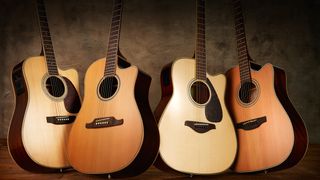
Battle of the mid-priced dreads
It’s easy for self-appointed traditionalists to be sniffy about cutaway acoustics.
They serve a very practical purpose in bringing improved access to the upper frets that can prove essential for some players moving from electric but...they just don’t have the same history and vintage visual cool of their iconic non-cut siblings. However, let’s set the record straight on one thing first, acoustic cutaways do have a proper history.
The Mario Maccaferri-designed Selmer guitars played by gypsy jazz hero Django Reinhardt were some of the earliest production-issue cutaway models dating as far back as the late 20s. And later, following Gibson’s production of archtops, its first flattop acoustic guitar model with a cutaway was the striking CF-100 in 1950. So, fast forward through guitar evolution and another 67 years and where are we?
Well, it’s good to see we’re all still loving our wood and steel friends. And for cutaway customers, the choice and value on offer now is extensive. Which brings us to this quartet of not-so-catchily named guitars - all around or under the mid-priced £500 mark. All electro. All much of a muchness, right? Hell no! Because the more us guitarists play, unplugged and electrified, the more differences we find...
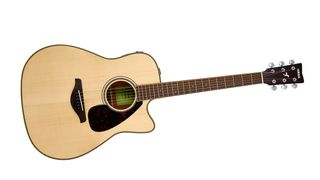
Yamaha FGX820C
Yamaha... now there’s a name we associate with electro-acoustics
And we’re right to. The company was a trailblazer in the cutaway electro field back in 1987, when it introduced us to the small-bodied charms of its APX series. It’s a big part of why Yamaha has had the reputation as a go-to brand for stage acoustics ever since.
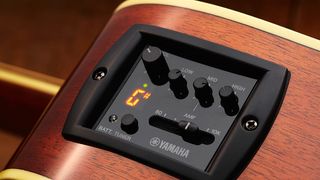
So what does this one bring to the table?
It ticks a trio of traditional dreadnought (Yamaha calls it a ‘Western’) boxes; natural gloss finish (admittedly with yellower cream binding than we’re used to seeing), solid Sitka Spruce top, mahogany back and sides... but a few tweaks too. Yamaha claims the scalloped bracing aids the output volume in the low to mid ranges. And when you get onstage, Yamaha’s under-saddle piezo pickup and System66 analog preamp will get you even louder.
So does it that deliver projection in its performance?
Yes, and it’s notable. The low mids are richer than the typical spruce top fare and bass notes offer a satisfying dark tonality that balances well. It’s a particularly resonant acoustic on initial unplugged impressions.
At A Glance
Type: Cutaway ‘western’-style electro-acoustic
Key Features: Solid Spruce top, mahogany back and sides, nato neck, Yamaha System66 preamp and SRT Pickup
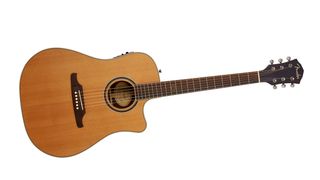
Fender F-1030SCE
I tend to think of Fender more as an electric brand... why?
Fair question. Fender has made some fine acoustics over the years, but until fairly recent the focus had been on making entry-level instruments instead. However, with a cedar top, understated satin finish and Fishman preamp - coupled with 70s F series headstock and ‘Viking’ bridge... this F-1030SCE could change preconceptions.
And does it?
Well, that C-shape neck makes a very good first impression. The action is low and fast, encouraging us to utilise the cutaway. The vintage appointments are a winner too... with the exception of the aged chrome tuners that look good and offer a different aesthetic, but don’t have the smoothness or precision of the competition here.
That top looks different, too...
It’s cedar. The effect of tonewoods is subjective, and two guitars are never the same, but on the whole a cedar soundboard should help provide clarity for fingerpickers and respond well to softer dynamics with less bright projection than spruce. To our ears, it helps bring a folkier midrange to the Fender.
At A Glance
Type: Cutaway dreadnought electro-acoustic
Key Features: Solid cedar top, rosewood back and sides, mahogany neck, Fishman Presys preamp
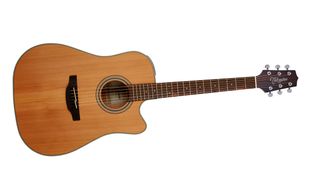
Takamine GD20CE-NS
Another satin-finished electro?
Yes indeedy, because not everyone wants the gloss. It’s another cedar top, but this time with laminated mahogany back and sides. It’s a clean build, but the top grain doesn’t look as impressive as the Fender - it’s a little artificial and cheap-looking, and it doesn’t do first impressions of the GD20CE-NS many favours if we’re honest.
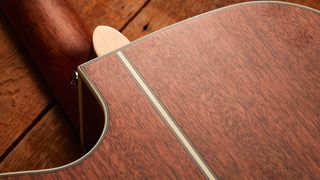
Looks aren’t everything, though - how does it sound?
With the highest action here, going up town in fretboardville is a bit of a stretch, which is a shame. But the Takamine has a clear voice from its cedar/hog combination that lends itself well to strong defined fingerpicking.
Is the preamp made by Takamine, too?
Yes, the company has long relied on its own innovation to amplify its guitars. This features the TP-4TD Preamp with traditional three-band EQ controls, gain and, like the others here, an onboard tuner - watch out for that because unlike the examples built into the preamp controls of those guitars you need to hold it down for a couple of seconds after tunings to disengage the mode.
At A Glance
Type: Cutaway dreadnought electro-acoustic
Key Features: Solid cedar top, mahogany back, sides and neck, Takamine TP-4TD preamp
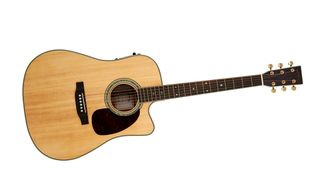
Sigma DMC-4E
Sigma-come-lately - the new kid in town?
More like the comeback kid. Sigma used to be Martin’s budget marque until it was bought by German company AMI Musical Instruments GmbH and was revived as an independent band in 2011. Now made in China, the Sigma is the only model here to offer a real bone saddle and nut.
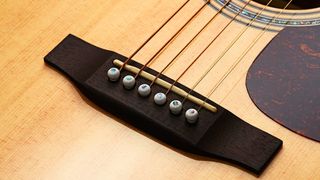
It certainly looks like a classic dread...
Given Sigma’s heritage, it should be no surprise it uses the classic Martin body shapes, but this one sounds just as good as it looks. The DMC has that classic spruce brightness, coupled with a piano-esque presence and clarity to notes that really shines in DADGAD.
It uses Fishman electronics like a Martin, too...
Yup, it’s a different model than the one found on the Fender, and easily the most feature-packed preamp here for shaping your tone. There’s EQ with sliders for bass and treble, with contour controls to boost or cut certain frequencies. You can also fight feedback with the notch filter and phase switch, and there’s even an additional brilliance control as a quick fix to cut through on stage.
At A Glance
Type: Cutaway dreadnought electro-acoustic
Key Features: Solid Sitka spruce top, mahogany back, sides and neck, Indian rosewood fingerboard, Fishman Prefix Plus-T preamp
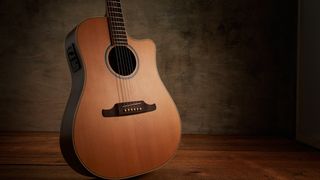
Head To Head
There are two things we need to know here: how we connect with the guitar unplugged, and how it performs plugged in.
We are old enough to remember a time not so long ago when buying a mid-priced electro was a trade-off, you often sacrificed the unplugged experience for the option of a preamp and being able to play live with it. We called it a ‘stage’ guitar. Thankfully, times have moved on and the Sigma proves just how far.
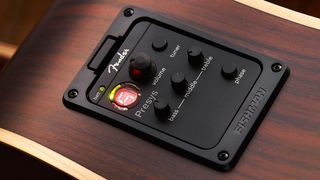
There’s a lot of control at your disposal with the Prefix Plus-T. Its electro tone is pretty zingy at flat levels, but it’s lively rather than quacky. Experimenting with the treble and brilliance controls with the contour editing proves to be responsive and underlines the versatility here.
Talking of Fishmans, the Fender’s less comprehensive Presys leaves us wanting more to partner that lovely neck. Sadly, the dreaded piezo quack rears its beak, perhaps accentuated by the mid-focused nature of the F-1030SCE, and while turning the EQ’s treble right down goes some way towards addressing it, fowl play is still lurking somewhere at the back.
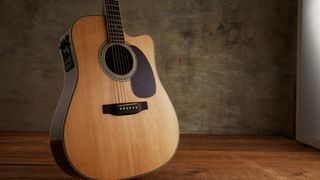
While we’re on the subject of plastic, both Yamaha’s and Fender’s rather fiddly controls are not the most accessible for those of us with digits of a more sausagey lilt. Takamine’s sliders are better, but the GD20CE-NS has us thinking about those old ‘stage guitars’ again.
Compared to the resonant Sigma and Yamaha here, it sounds comparatively uninspiring unplugged, and its electro offering is solid, but less detailed, electro experience compared with the others. It cuts through well, but we soon wanted to dial a notch down from midnight on the treble dial to mellow abrasive highs. In comparison, the Yamaha’s heartier mids are reflected through our test acoustic combo, balancing well with the brightness, through the Adjustable Midrange Frequency control doesn’t seem to have much effect to our ears.
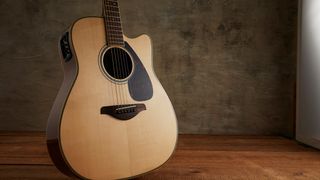
Final verdict
The two parts of our test revealed some interesting traits in how we choose the guitars we play. Because there’s different factors of appeal here; preference and needs.
You should try out and choose a guitar you’ll want to pick up, and fundamentally enjoy on a one-to-one level. But according to your needs as a player you’ll also consider how that guitar represents your playing and its own character in a live environment.
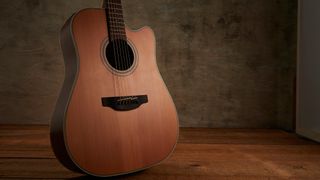
The good news is that there’s plenty of affordable preamp pedals and modelling gear that can shape a piezo sound further towards the way you want it. But out of the box, the Sigma impressed across the fretboard, closely followed by Yamaha. Both prove that you no longer need to compromise for your cutaway. And yet it’s the Fender’s looks and unplugged playing experience we enjoyed the most. That cedar-fuelled voice offering a different spin. But of course, then we plugged it in...
The differences between piezos and preamps come into play - but they’re also reflecting the character of the guitars they’re fitted to. And sometimes that won’t perform through an acoustic amp or PA in the way you might have assumed. If you can feel a ‘moral of this story’ moment coming from this conclusion then let it be this; try before you buy should mean trying a guitar in the ways you think you’ll need it. And that’s especially true for cutaway acoustics.
Best for value: Yamaha FGX820C
4/5
Best for lead players: Fender F-1030SCE
4/5
Best for fingerpicking: Takamine GD20CE-NS
3/5
Best for plugging in: Sigma DMC-4E
5/5

Total Guitar is Europe's best-selling guitar magazine.
Every month we feature interviews with the biggest names and hottest new acts in guitar land, plus Guest Lessons from the stars.
Finally, our Rocked & Rated section is the place to go for reviews, round-ups and help setting up your guitars and gear.
Subscribe: http://bit.ly/totalguitar

“Over the past three decades, his partnership with Martin has produced some of the most sought-after signature guitars in the company’s history”: Martin recreates Eric Clapton’s MTV Unplugged acoustic for limited edition anniversary run

“The deepest-ever dive into the Metallica star’s eclectic guitar collection”: Kirk Hammett and Gibson Publishing team up for epic coffee-table book

“Over the past three decades, his partnership with Martin has produced some of the most sought-after signature guitars in the company’s history”: Martin recreates Eric Clapton’s MTV Unplugged acoustic for limited edition anniversary run

“The deepest-ever dive into the Metallica star’s eclectic guitar collection”: Kirk Hammett and Gibson Publishing team up for epic coffee-table book
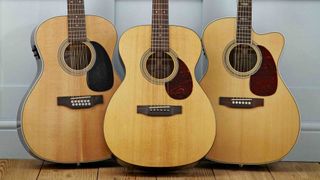



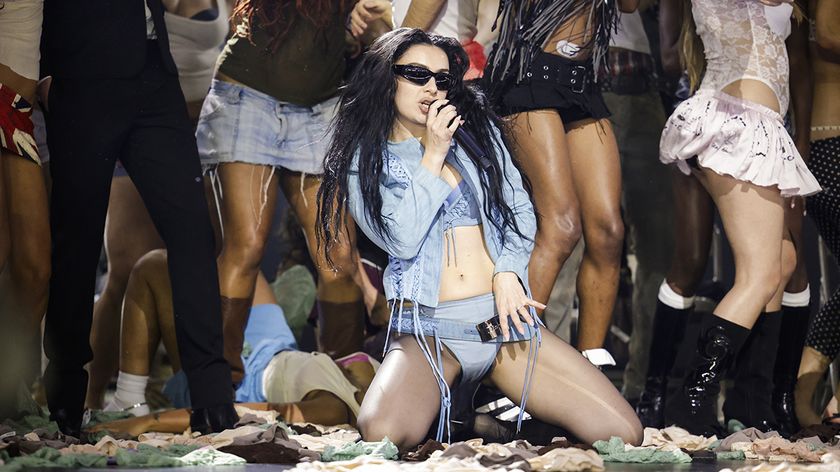


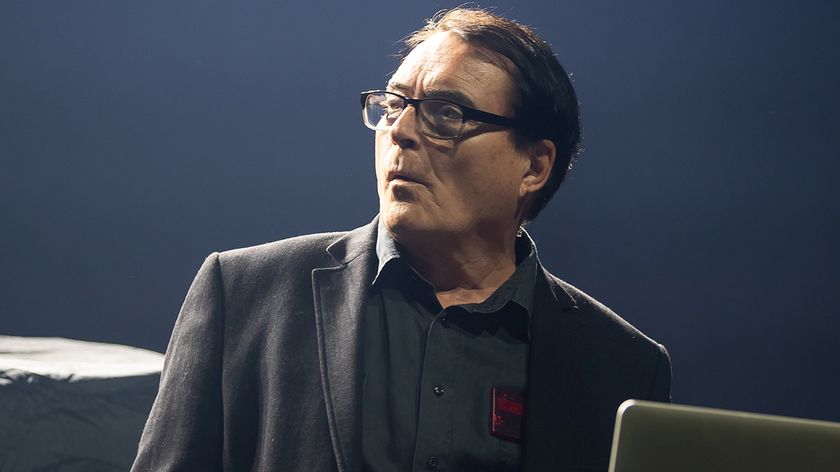




![Chris Hayes [left] wears a purple checked shirt and plays his 1957 Stratocaster in the studio; Michael J. Fox tears it up onstage as Marty McFly in the 1985 blockbuster Back To The Future.](https://cdn.mos.cms.futurecdn.net/nWZUSbFAwA6EqQdruLmXXh-840-80.jpg)